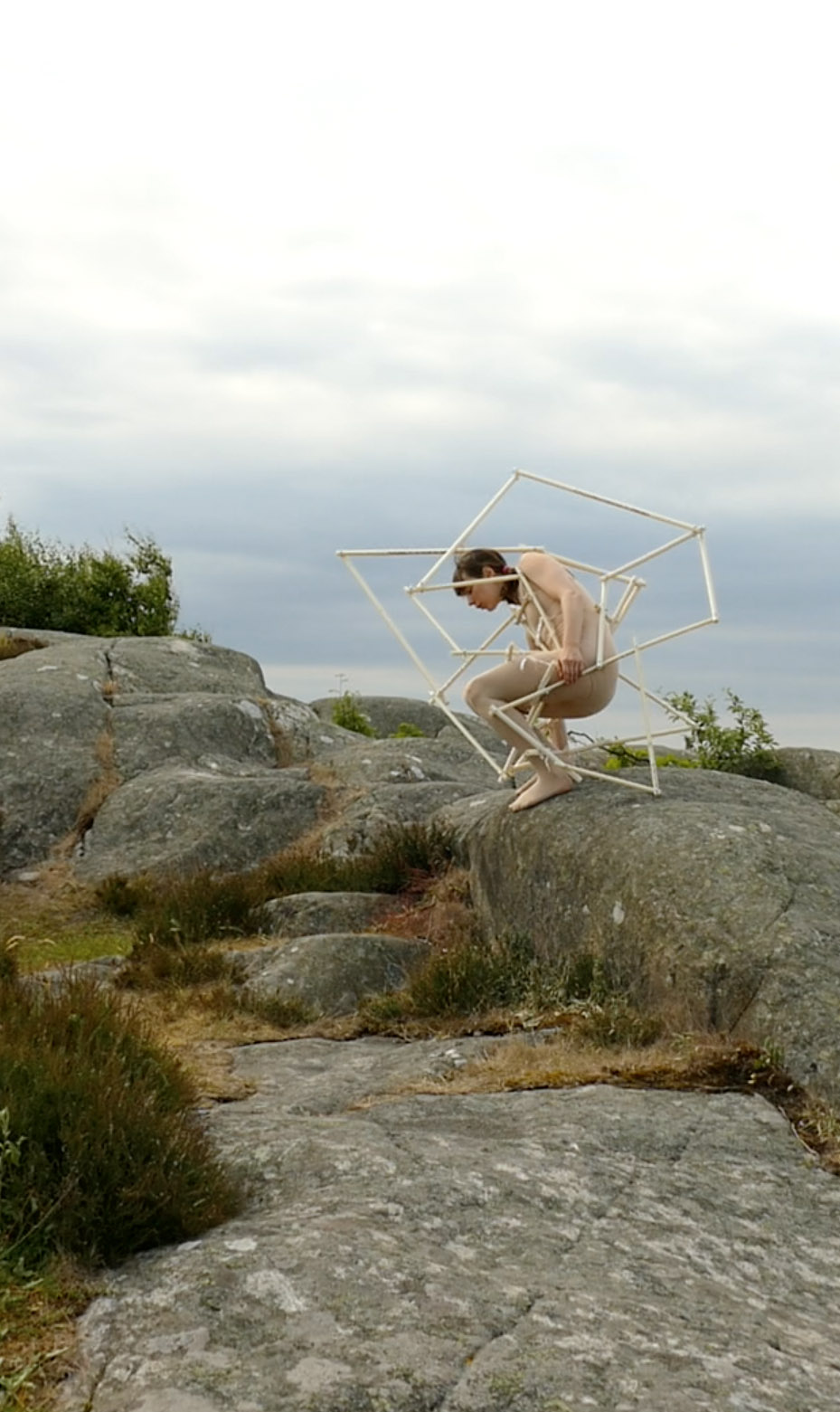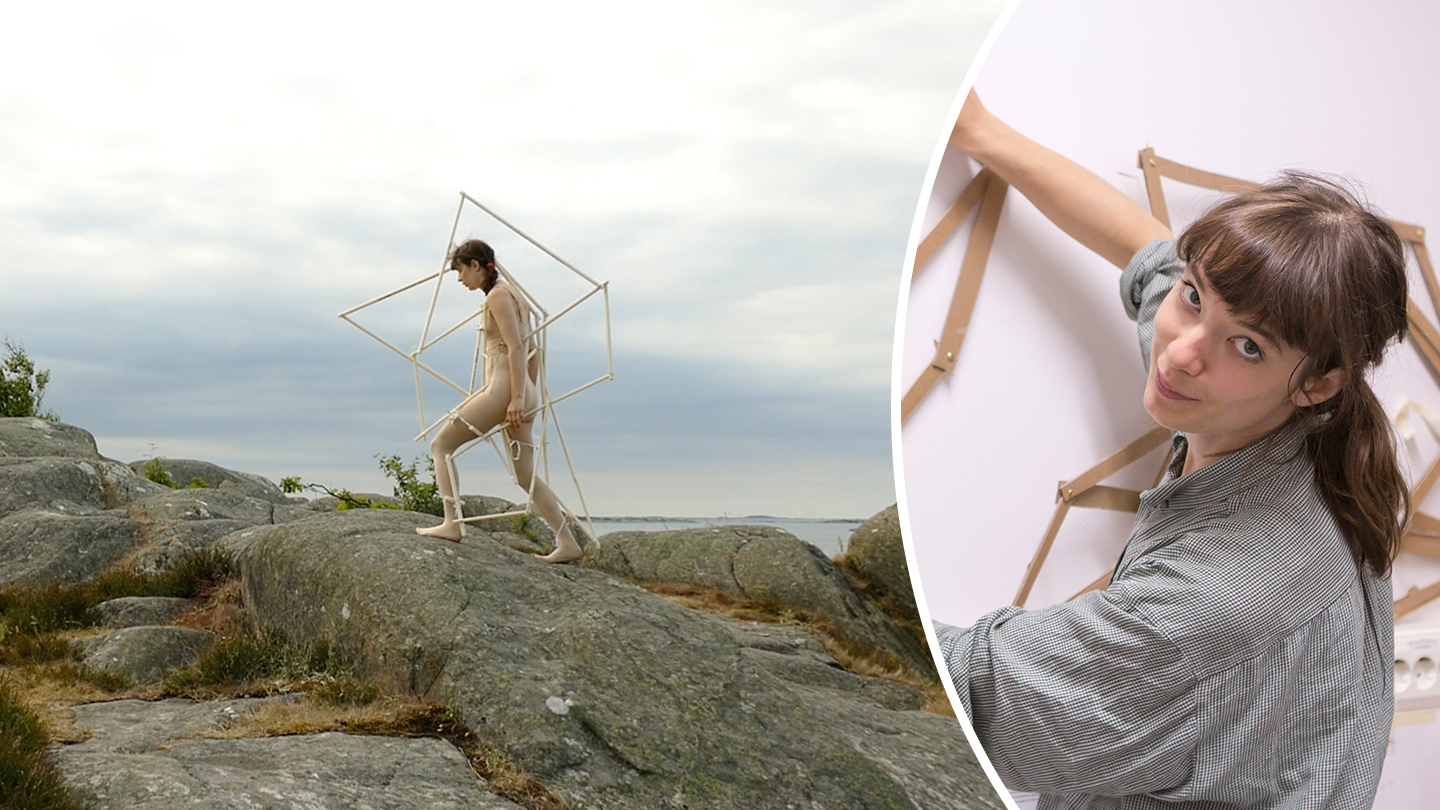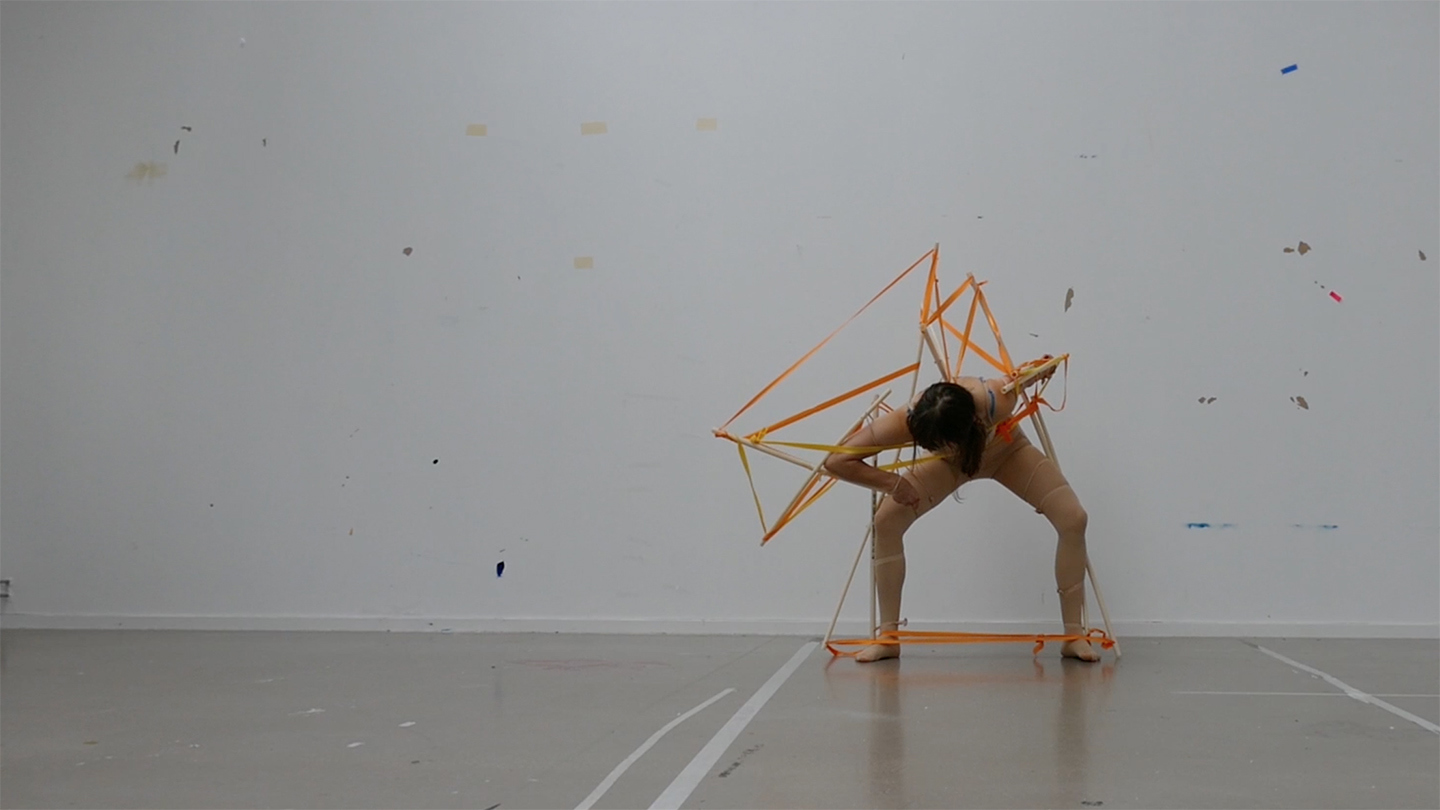She explores body movement as a material in design processes
2021-03-19
During her time as a doctoral student, Linnea Bågander researched new approaches to how the body and body movements can be understood as a design material.
Ideas from practical exploration
Linnea began her exploration of the subject during her Master's studies. Through various sketches and experiments, she began to investigate what happens if we use the body in new ways when we create.
“My interest in this area was born several years ago. I designed something and then became very interested in how different placements on the body made the design move in a certain way. And that’s not actually so surprising – clothes usually look different depending on how we move. And then I really started to understand the importance of working with the expression of movement,” said Linnea.
The body gets a new role in design processes
During her doctoral studies, Linnea investigated how the body and different materials interact in different ways. She also formulated different approaches, which can be important tools for designers and researchers who want to explore body movement in their work.
“I would say that the result of my research is primarily methods and definitions to be able to work with movement as a material. You can call it an approach and a particular way of thinking about the body and movement as a material in design,” Linnea explained.
Exploration using sketches, bodies, and digital tools

To explore different aspects of movement, she worked with sketches and prototypes in full scale. She has also tested prototypes on her own body as well as collaborated with dancers and programmers.
“I have partly used my own body as it is available to me all the time, but I have also worked a lot with the performing arts. I have done this to be able to work with dancers, who are experts in movement and what you can do with the body."
Together with programmers, she has tested digital aids to explore how movement can be understood as a material. She believes that it creates a more isolated impression of the movement being explored – in the digital world, other materials cannot distract our impressions.
“Digital tools are good ones for communicating and illustrating movement as a material. It can become a little unclear when you work with the body together with other materials. But when you examine how you can use digital aids to illustrate how different parameters relate to each other, and how they change in movement, you can begin to understand the potential of movement and the different parts of the body.”
Wants to dive deep into specific movement patterns
In her doctoral thesis, Linnea highlights the potential that exists in considering the body as a material, where the interaction of movements with other materials can be used to create different expressions.
“I think that it can lead to an awareness in design processes and that this approach can work as a good tool.”
And there is still a lot to explore on the subject.
“There are parts of the doctoral thesis where I did not have the opportunity to be as specific as I would have liked. For example, I would like to look at specific movement patterns and how to design according to them, and how it can affect the person wearing the design, how the person experiences the materials and what they incite in them. These are aspects of movement that I am interested in exploring further.”
Read more
Linnea Bågander defended her doctoral thesis on 25 February at the Swedish School of Textiles, University of Borås, in the field of Textiles and Fashion.
Read the thesis: Body movement as material: Designing temporal expressions
Principal supervisor: Clemens Thornquist
Emilia Vermelin
Linnea Bågander. Portrait photo: Suss Wilén



